Cover photo by Ryan Tippett.
Find the Vaal Sprite in the FBIS database (Freshwater Biodiversity Information System) here.
Family Coenagrionidae
Identification

Near Prieska, Northern Cape
Photo by Ryan Tippett
Small size but is the largest of the ‘Red’ sprites in South Africa.
Length up to 39mm; Wingspan attains 49mm
Like many other Pseudagrion species the male Vaal Sprite’s colouration is variable and changes gradually with age. The postocular spots in particular, range from greenish when young, through greenish-orange, to orange-brown in aged individuals. The sides of the thorax are greenish-blue in young individuals. The light blue pruinosity starts low down and eventually extends up to the antehumeral stripe with maturity.

Upington, Northern Cape
Photo by Ryan Tippett
Females are khaki brown, often with a thin pale blue dusting on the sides of the thorax and abdomen. They are best identified by their association with the males.
The Vaal Sprite is one of four mostly red sprites found in South Africa. The others are the Acacia Sprite, Masai Sprite, and the Variable Sprite
Click here for more details on identification.
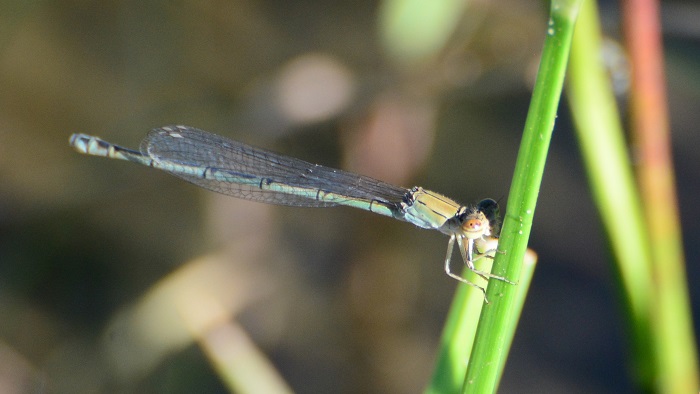
Near Prieska, Northern Cape
Photo by Ryan Tippett
Habitat
The Vaal Sprite inhabits strong flowing rivers in open landscapes. The preferred habitat is fast flowing water with abundant rocks and some emergent and bank side vegetation like reeds and grasses. It appears to somewhat avoid large stretches of broken or white water. In areas where they are numerous, the Vaal Sprite will also occupy slow-moving parts of the river as well as quiet backwaters. Pseudagrion vaalense mostly frequents undisturbed habitats and generally avoids dams and degraded stretches of rivers.

Photo by Ryan Tippett
Behaviour
The Vaal Sprite is seldom found away from rivers. They perch prominently at sunny locations on rocks and vegetation, typically low down, close to the water. It is weary and alert, often flying to midstream rocks and reeds when disturbed. The Vaal Sprite frequently hovers over eddies and swirls where the current is strong. The flight is rapid and usually low over the water. Females are frequently found in the same vicinity as the males.
The Vaal Sprite is active from October to May (see Phenology below)
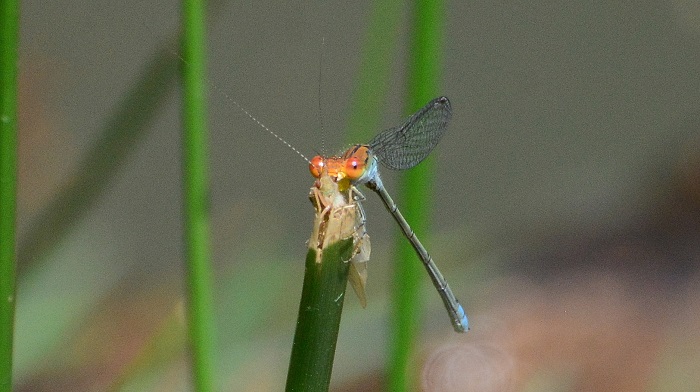
Near Prieska, Northern Cape
Photo by Ryan Tippett
Status and Conservation
The Vaal Sprite is locally common at suitable sites within its restricted distribution. It is listed as of Least Concern in the IUCN Red List of Threatened Species. The Vaal Sprite is moderately sensitive to habitat degradation and occurs mostly in undisturbed places. The species has not adapted to man-made habitats.
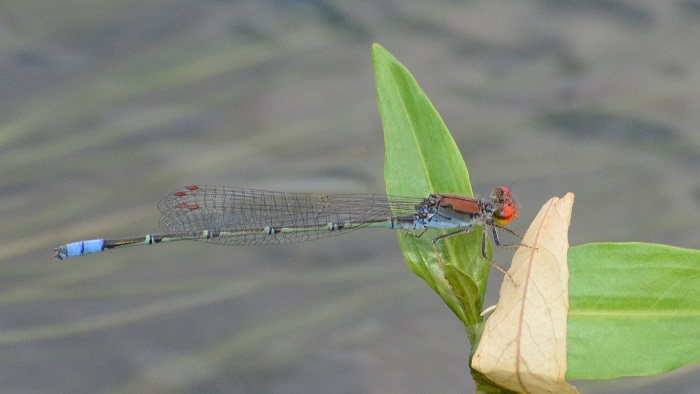
Near Keimoes, Northern Cape
Photo by Ryan Tippett
Distribution
The Vaal Sprite is endemic to South Africa and southern Namibia. It is restricted to the Orange/Vaal River system and its major tributaries. The Vaal Sprite has been recorded from the Free State, North West, Northern Cape, and Eastern Cape Provinces.
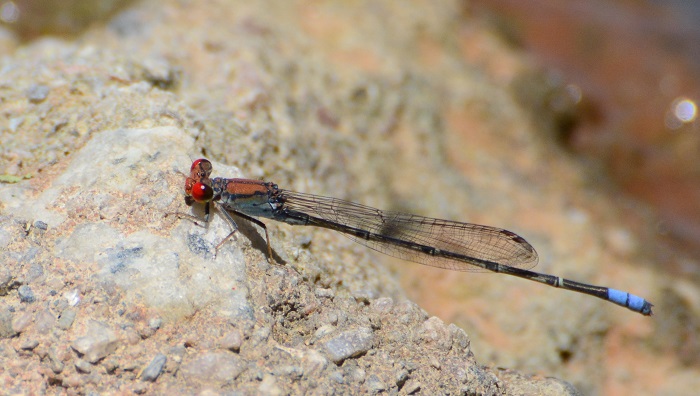
Near Keimoes, Northern Cape
Photo by Ryan Tippett
Below is a map showing the distribution of records for Vaal Sprite in the OdonataMAP database as at February 2020.

Below is a map showing the distribution of records for Vaal Sprite in the OdonataMAP database as of December 2024.
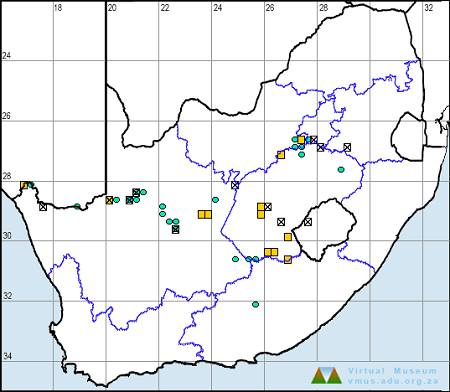
The next map below is an imputed map, produced by an interpolation algorithm, which attempts to generate a full distribution map from the partial information in the map above. This map will be improved by the submission of records to the OdonataMAP section of the Virtual Museum.


Ultimately, we will produce a series of maps for all the odonata species in the region. The current algorithm is a new algorithm. The objective is mainly to produce “smoothed” maps that could go into a field guide for odonata. This basic version of the algorithm (as mapped above) does not make use of “explanatory variables” (e.g. altitude, terrain roughness, presence of freshwater — we will be producing maps that take these variables into account soon). Currently, it only makes use of the OdonataMAP records for the species being mapped, as well as all the other records of all other species. The basic maps are “optimistic” and will generally show ranges to be larger than what they probably are.
These maps use the data in the OdonataMAP section of the Virtual Museum, and also the database assembled by the previous JRS funded project, which was led by Professor Michael Samways and Dr KD Dijkstra.
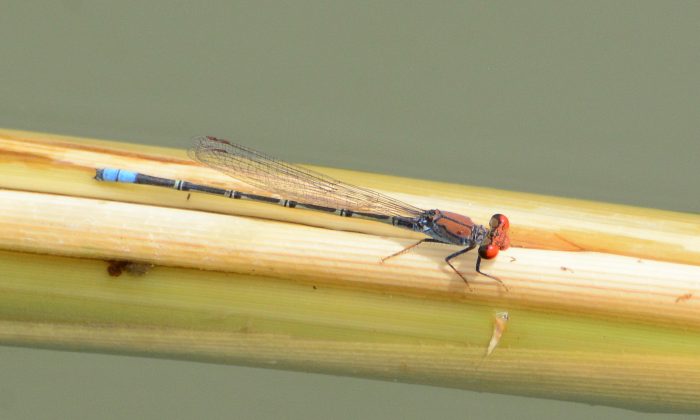
Near Keimoes, Northern Cape
Photo by Ryan Tippett
Phenology


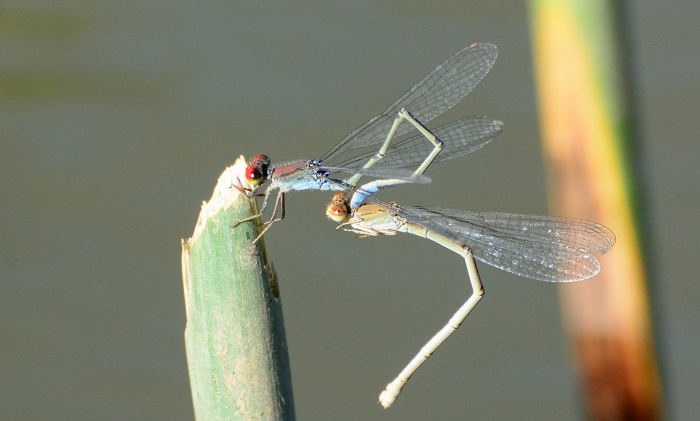
Near Prieska, Northern Cape
Photo by Ryan Tippett
Further Resources
All photographs by Ryan Tippett.
Vaal Sprite Pseudagrion vaalense Chutter, 1962
Other common names: Vaalriviergesie (Afrikaans)
Recommended citation format: Loftie-Eaton M; Navarro R; Tippett RM; Underhill L. 2025. Vaal Sprite Pseudagrion vaalense. Biodiversity and Development Institute. Available online at https://thebdi.org/2020/04/13/vaal-sprite-pseudagrion-vaalense/
References: Tarboton, M; Tarboton, W. (2019). A Guide to the Dragonflies & Damselflies of South Africa. Struik Nature.
Samways, MJ. (2008). Dragonflies and Damselflies of South Africa. Pensoft
Samways, MJ. (2016). Manual of Freshwater Assessment for South Africa: Dragonfly Biotic Index. Suricata 2. South African National Biodiversity Institute, Pretoria
Martens, A; Suhling, F. (2007). Dragonflies and Damselflies of Namibia. Gamsberg Macmillan.
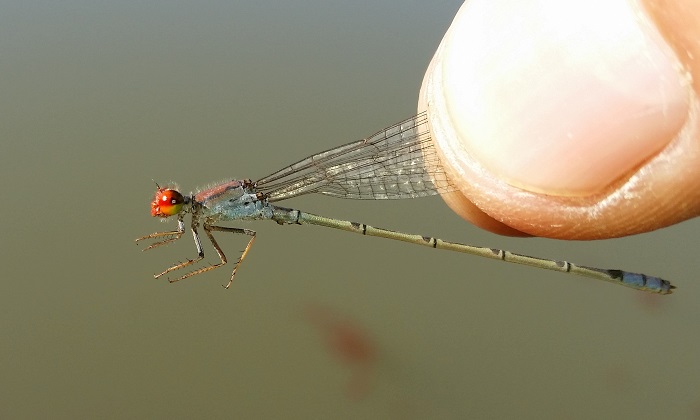
Near Prieska, Northern Cape
Photo by Ryan Tippett
